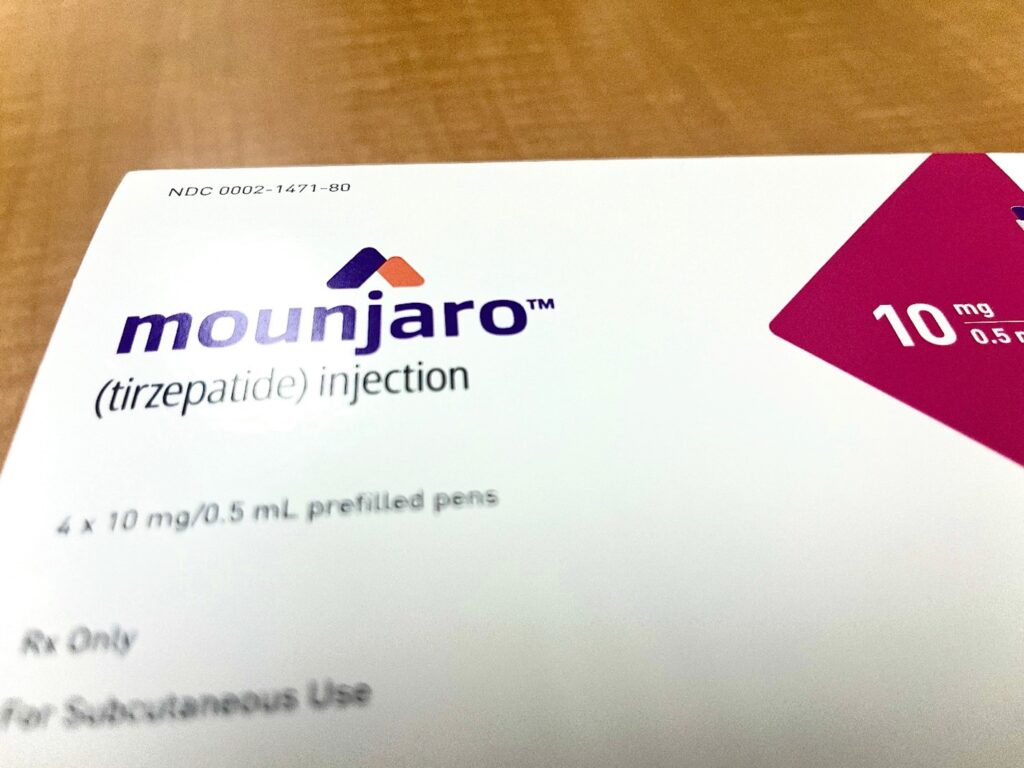In a head-to-head trial, Eli Lilly’s Mounjaro (tirzepatide) has emerged as the superior GLP-1 agonist for weight loss over Novo Nordisk’s Ozempic (semaglutide).
It found that among adults with overweight or obesity, the use of tirzepatide was associated with significantly greater weight loss than semaglutide. The results of the study were published in JAMA Internal Medicine.
The study, conducted by health data analytics company Truveta, involved the analysis of more than 18,000 electronic records of overweight or obese adults in the US. The data showed that patients who took tirzepatide lost more weight than those who received semaglutide, and the effects amplified over time.
People who received the highest dose of Mounjaro lost an average of 15.6 percent of their body weight compared to 12.4 percent among those who took Ozempic.
After three months of using tirzepatide, patients lost an average of 5.9 percent of their body weight compared to 3.6 percent for semaglutide. After one year, those on tirzepatide lost an average of 15.3 percent of their body weight compared to 8.3 percent for those taking semaglutide.
The Truveta study is the largest comparative effectiveness study of tirzepatide and semaglutide for weight loss using real-world data.
Tirzepatide had only been approved for type 2 diabetes at the time and not for weight loss. This is why the study only evaluated individuals who had prescriptions for the two drugs for type 2 diabetes, but not all had the disease.
XTALKS WEBINAR: The Future of GLP-1 Receptor Agonists: A Precision Medicine Approach
Live and On-Demand: Monday, July 15, 2024, at 1pm EDT (10am PDT)
Register for this free webinar to learn about the mechanism of action of GLP-1 receptor agonist drugs, their clinical benefits and the innovative strides being made to enhance their efficacy and patient compliance through novel delivery systems.
Additionally, patients with overweight or obesity taking tirzepatide were three times more likely to achieve 15 percent weight loss than those taking semaglutide. While 42 percent of individuals on tirzepatide reached this target after one year of treatment, only 18 percent taking semaglutide achieved it.
Truveta also reported that those taking tirzepatide compared to semaglutide were 1.8 times more likely to achieve five percent weight loss, 2.5 times more likely to achieve ten percent weight loss and 3.2 times more likely to reach 15 percent weight loss.
Even at lower doses, Mounjaro outperformed Ozempic. The mid-range dose of tirzepatide led to an average weight loss of 13.5 percent, still higher than the weight loss seen with semaglutide.
While both drugs improved blood sugar control, Mounjaro showed slightly better outcomes, with more participants achieving target HbA1c levels.
Novo pointed out some flaws in the study, namely that the drugs are approved for diabetes and not obesity. It said the “ideal way to compare two treatments is an adequately powered head-to-head randomized clinical trial in obesity.”
The compounds used in Lilly’s Mounjaro (tirzepatide) and Novo’s Ozempic (semaglutide) are the same as in the obesity versions of the drugs, Zepbound and Wegovy, respectively.
The company also said the analysis does not provide enough information on doses taken at the beginning and end of treatment.
Related: Eli Lilly Spends Big on First Mounjaro TV Commercial for Diabetes
GLP-1 Agonists for Diabetes: Mounjaro Versus Ozempic
Tirzepatide is a dual glucose-dependent insulinotropic polypeptide (GIP) and glucagon-like peptide-1 (GLP-1) receptor agonist. This dual action is believed to enhance its efficacy in reducing body weight and improving glycemic control. On the other hand, semaglutide is a GLP-1 receptor agonist, which also aids in weight loss and glucose management but through a single pathway.
While both medications were generally well-tolerated in the trial, participants on Mounjaro reported fewer gastrointestinal issues, such as nausea and diarrhea, compared to those on Ozempic.
More confirmatory data will be available from Lilly’s currently ongoing SURMOUNT-5 trial looking at the two drugs in 700 participants across the world. The study began in April 2023, evaluating the effects of treatment over 72 weeks.
With its superior weight loss results, Mounjaro could be eyeing gains over the currently dominating Ozempic in the GLP-1 market.
Ozempic, which was approved by the FDA in 2017, has already earned $4.3 billion in sales in the first quarter of this year. Approved in 2022, Mounjaro has brought in $1.8 billion in the first quarter of 2024 for Lilly, making positive headway on Ozempic.
If you want your company to be featured on Xtalks.com, please email [email protected].












Join or login to leave a comment
JOIN LOGIN